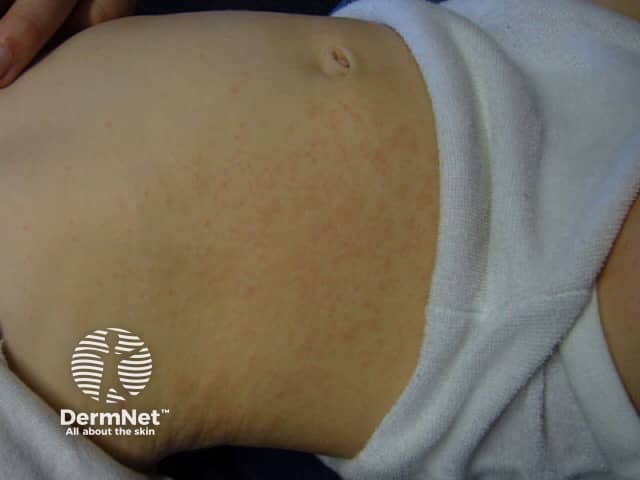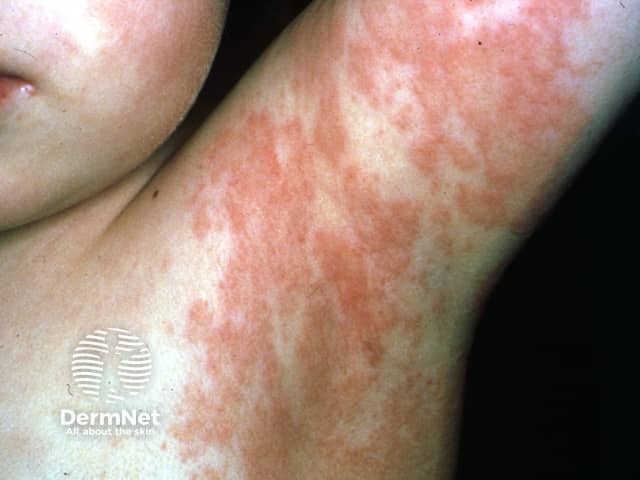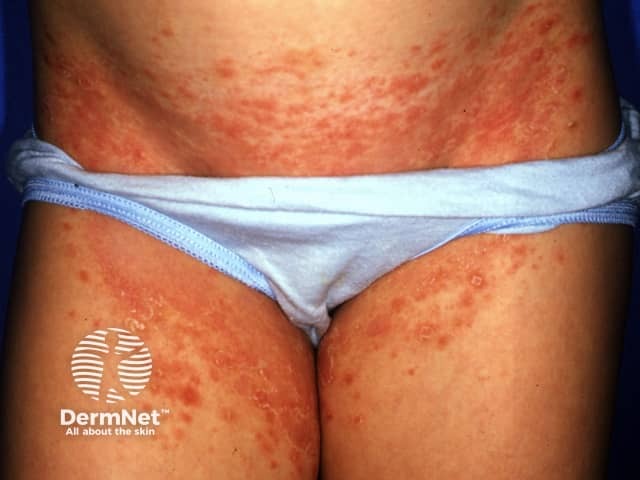Main menu
Common skin conditions

NEWS
Join DermNet PRO
Read more
Quick links
Author: Dr Amanda Oakley, Dermatologist, Hamilton, New Zealand, 1999. Updated in September 2015. DermNet Revision October 2021
Introduction Demographics Causes Clinical features Diagnosis Treatment Outcome
Laterothoracic exanthem is an uncommon rash involving the sides of the trunk in young children.
Laterothoracic exanthem is also known as Asymmetric Periflexural Exanthem of Childhood (APEC). A new name has been proposed: superimposed lateralised exanthem of childhood (2014).
Laterothoracic exanthem affects twice as many girls as boys. The average age is two years; most cases are between one and five years of age.
Laterothoracic exanthem mainly occurs in winter and spring, as is common for viral infections. In occasional cases a specific virus has been associated with laterothoracic exanthem including adenovirus, parvovirus B19, Epstein-Barr virus, and most recently with SARS-CoV-2 (COVID-19).
Following a case associated with adenovirus, the authors speculated that early postzygotic mutation has rendered the skin on one side of the body more reactive to an infective agent. Subsequent involvement of the other side of the body may reflect less reactive skin on that side.
The rash is often mistaken for eczema (dermatitis) or a fungal infection (ringworm). It usually starts in the armpit or groin and gradually extends outwards, remaining predominantly on one side of the body. It may spread to the face, genitalia, hands, or feet.
Laterothoracic exanthem starts as tiny raised pink papules, which may be surrounded by a pale halo. These become flat and scaly over the next week or two. The middle of older patches fades to a dusky grey. Occasionally the patches are net-like or in rings. Little blisters or blood spots may occur. The rash is usually quite itchy.
Sometimes other features of viral infection occur at the onset of the rash, such as a fever, sore throat, cold, vomiting, and/or diarrhoea. The lymph glands in the armpits and groins may be enlarged.



Laterothoracic exanthem is a clinical diagnosis and although investigations are not usually required they may include:
There is no specific treatment for laterothoracic exanthem. The itching can be relieved with:
The rash lasts for several weeks, but always resolves without treatment within three months.